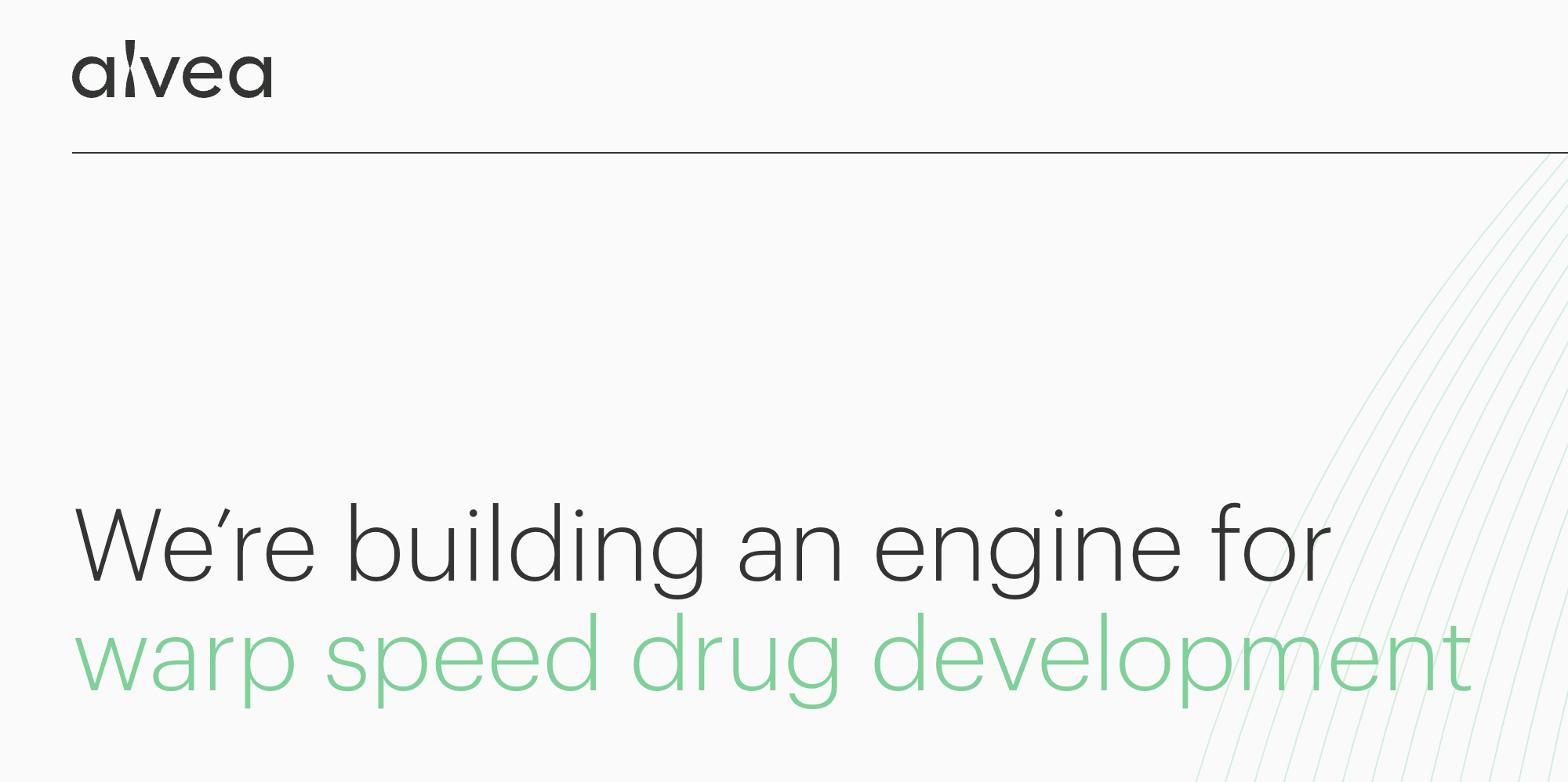To connect the somewhat abstract information provided in our series so far to a real world use case, we want to outline what made it possible for a team to be the fastest transition of a pharmaceutical company to the clinical stage so far.
Contents
Alvea Story & Culture
End of 2021, at the beginning of the SARS-CoV-2 Omicron wave, the biotech startup Alvea was founded with the objective of delivering a booster vaccine with characteristics suitable for low- and middle-income countries. Those included strong shelf stability, straightforward manufacturing and easy adaptability to future variants. Citing from the publication of the trial (currently under review) that tested their vaccine candidate:
“Against the widely held public conception that drug development is slow, bureaucratic and unattainable for new companies, 174 days after Alvea was founded at the onset of the Omicron wave Alveavax-v1.2 was dosed in humans, without skipping any preclinical safety precautions or shortcuts in good manufacturing practice.”
Alvea validated the earliest versions of the vaccine design during a one-week pre-Christmas 2021 hackathon with a team of ~8. Subsequently the org grew to 35 people in the matter of weeks following the mantra: hire the best people anyone has in their network and convince them to collaborate on a three-month sprint. The company ended up with a team spanning from Europe, the U.S., and Canada, to a person living in New Zealand. The following describe core culture principles and activities that we believe enabled the team to achieve these results.
Understand/verify industry best-practices
Alvea spent a lot of time and effort to educate themselves about how to best navigate a very ambitious drug development program. Part of what motivated the authors of this article to write it was not finding a comprehensive end-to-end overview of the essential parts of drug development that could be given to staff members without a history in drug development. Many ways get you there including: reading the GxP guidelines; reading regulatory documents of jurisdictions; investigating documents of other clinical trials; talking to a variety of consultants or doing training programs. Don’t be afraid to ask dumb questionsIt turns out that you’ll end up getting a non-trivial amount of contradicting evidence and resolving is on you – the final responsibility always resides with the sponsor. Combine understanding/verifying what you ought to be doing with an unwavering focus on a primary goal (“Submit our injectable Alveavax-v1.2 clinical trial application to South Africa for conditional approval before March 18th 2022, as long as GLP BA2 studies show positive results.”), relentless work and quick turnarounds, and you are kind of set up for success. For many at the company it was the closest to lived operational excellence they had experienced yet.
Determine your jurisdiction and exact specification
While ICH provides an exceptional improvement in terms of harmonisation across countries’ drug development regulation, and for vaccines in particular many refer to the WHO guidelines, countries differ in nuances that eventually matter. Alvea scanned the world and deeply considered at least 10 different options to find a jurisdiction that provided the right mix of right target population, regulatory clarity, fast timelines and reputable regulators. The top candidates for a Phase 1 study ended up being Australia, South Africa, and Canada, and the decision was made to proceed with South Africa.
Once Alvea knew the target jursidiction, processes could be optimised. The exact specification kick off all the downstream processes: animal testing (which, how many, how long, etc.), GMP material (how stable, what exact GMP specification, etc), submission criteria (timelines for review cycles, do you need to have all the data for submission or can you provide certain documents such as drug stability data later). CROs often like to claim that they can run trials anywhere, but sponsors benefit heavily from local expertise gained by past trial run with the same study sites, ethic boards, laboratories and supply depots. Going with a locally experienced CRO and having exceptionally high standards for the CRO’s project manager was key to the success of the study.
Find, evaluate, and parallelize vendors (or do it yourself if you can).
For manufacturing, animal testing, regulatory application, trial setup, and all the respective subdomains highly specialised suppliers or contractors exist. Towards the goal of conducting the clinical trial, all of them constitute single points of failures. Alvea was very concerned about this and therefore followed a couple of strategies:
- Whenever you can reliably do it yourself, you should. Communication across orgs is harder and in most scenarios you don’t know how relentless another party will ensure that they deliver the right results on time, even if it means more hours, a different process, etc. Examples include inhousing initial steps for creating starting material for manufacturing yourself or designing the clinical trial protocol.
- If you can afford it, parallelize vendors. Alvea had to rely on contractors for manufacturing, animal testing, and parts of clinical trial setup. For all of them at least initially multiple parties were hired and thoroughly evaluated. The trial was also submitted to multiple jurisdictions.
- Build a quality management system and audit contractors. This is not regulation slowing you down, but regulation saving your a** from future disasters.
- Be able and willing to part from vendors. Alvea was dissatisfied with the performance of multiple CROs and even while running the trial decided to stop the collaboration and find new partners or in-house the activity.
- Build partnerships with contractors that deliver exceptional results.
Alvea winded down mid of 2023. You can read more about the story here and here.
Other articles in this series
- Stakeholders in Drug Development
- The Blueprint of Drug Development
- Origins of Drug Regulation
- Recommended Literature
- Alvea: A Case Study of the Fastest Biotech to Go to In-Human Trials
- Conclusions

